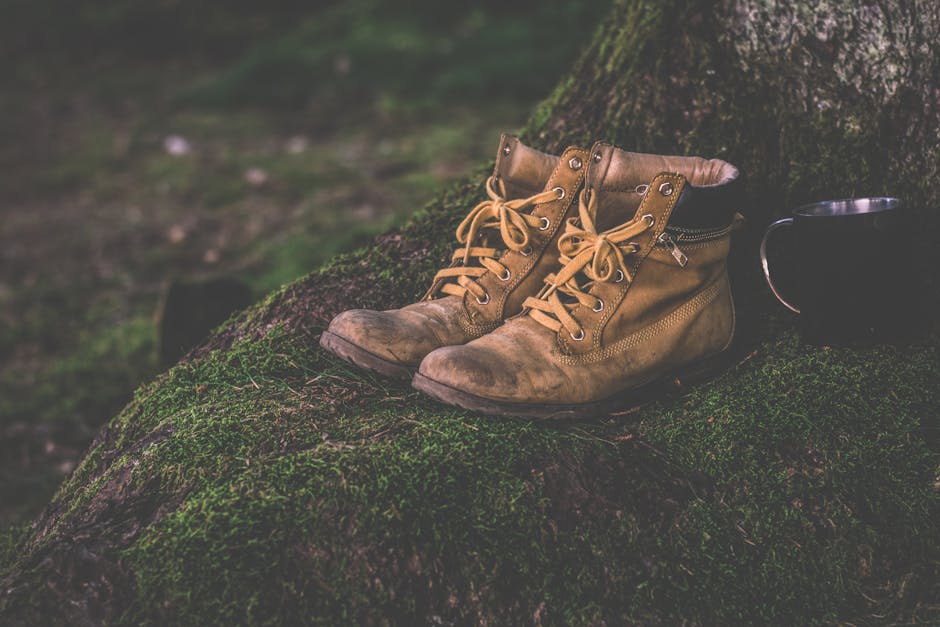Fitness and Foraging: Boost Your Health with Wild Food Workouts
Have you ever considered that your workout routine might benefit from a dash of adventure? Fitness and foraging might seem like an unusual pairing, but integrating wild food harvesting into your fitness regimen can elevate your physical and mental health in unexpected ways. Picture this: instead of hitting the treadmill, you lace up your sneakers for a nature walk, where you collect edible plants, mushrooms, or berries while getting a workout. It's not merely a way to get your steps in; it’s a holistic experience that connects you with nature, nourishes your body, and invigorates your mind. Let's dive into how this natural fusion can enhance your fitness journey.
The Connection Between Nature and Wellness

Research has consistently shown that spending time in nature has significant benefits for mental health. According to a study published in the journal Environmental Science & Technology, engaging with the natural environment can reduce stress, anxiety, and depression while enhancing mood and cognitive function. By incorporating foraging into your fitness routine, you create opportunities to reap these mental health benefits while getting physically active.
Imagine starting your day with a sunrise hike, your senses tingling as you discover the intricate details of wild herbs and flowers lining the path. You might even stumble upon a patch of wild blueberries. This experience does more than fill your basket; each step becomes a mindful moment, allowing you to connect with your surroundings and tune into your body’s movements. The contrast of wild food harvesting and traditional workouts adds a refreshing twist to your daily exercise.
The Physical Benefits of Foraging

Integrating foraging into your fitness routine offers a unique way to challenge your physical abilities. While you're searching for wild edibles, you're likely to encounter varied terrains—hills, streams, and thick underbrush—that enhance your cardiovascular fitness, improve strength, and increase flexibility. Not only does this dynamic exercise mimic high-intensity interval training (HIIT), but it also makes your workouts more enjoyable.
Improving Cardiovascular Health

Foraging can significantly boost your heart rate as you hike through different terrains within your locality. According to Harvard Health, the benefits of brisk walking translate to improved cardiovascular health, lung function, and stamina. As you traverse uneven surfaces, you're not just getting your steps in; you're engaging in muscle-building activities that promote endurance and heart health.
Building Muscle and Flexibility

The act of bending, squatting, or reaching to collect wild edibles promotes functional strength while enhancing flexibility. Additionally, the varied motions involved in foraging challenge virtually every muscle group—from your core to your legs and arms. Activities, such as climbing over logs or stretching to reach fruit, while gathering your next snack, help promote muscle tone and stability. For those interested in enhancing their outcomes more deliberately, consider incorporating small weights into your foraging expeditions.
Mental Health and Connection to Nature

The positive effects of foraging extend beyond physical benefits. As you delve into the world of wild food harvesting, you may find yourself more attuned to your emotions and sensory experiences. Engaging in mindful movement through nature-based workouts can lead to a sense of accomplishment that bolsters mental resilience, allowing you to cultivate resilience in everyday challenges.
Mindfulness in Action: The act of picking wild plants calls for focus and concentration. As you scan the ground or look up into trees, your mind actively engages in the present moment. Research from the Journal of Positive Psychology shows that mindfulness can significantly improve mental well-being, reduce stress, and promote overall happiness. Pairing this focus with a workout creates an enriching experience that benefits both body and mind.
Social Connections Through Foraging

Foraging can also become a social activity when shared with friends or family. Forming a group to explore local trails strengthens relationships and provides a sense of community. Whether it's sharing recipes, planning future foraging trips, or simply enjoying each other’s company in nature, these shared experiences can enhance mental health and create lasting memories.
How to Get Started with Fitness and Foraging

If you are eager to weave nature and wild foraging into your fitness routine, here are some effective steps to get started:
Research Local Areas

Begin by researching local parks, nature reserves, or forested areas where foraging is permitted. Many regions offer workshops or guided foraging tours where you can learn safely about local edible plants and mushrooms while connecting with like-minded individuals.
Equip Yourself with Knowledge

Before heading out, familiarize yourself with the edible species in your region, as some plants may look similar to poisonous varieties. Resources such as Foraging with Kids by the popular author and forager, and websites like EatTheWeeds.com provide valuable information on safe foraging practices.
Gear Up for Adventure

Invest in a sturdy pair of hiking shoes, a comfortable backpack for carrying your harvest, and perhaps a field guidebook to help identify edible plants. Bring along a water bottle to stay hydrated, and don’t forget sunscreen or a hat for your outdoor ventures.
Map Your Workout and Harvest Plan

Consider integrating a workout plan into your foraging adventure. Set specific fitness goals, such as a certain distance to walk or a target number of wild edibles to collect. This not only adds a challenge to your workout but also provides motivation to spend more time outdoors.
Nutritional Benefits of Foraged Foods

The culinary delights of foraged foods are as impressive as their physical benefits. Wild foods are often richer in nutrients and flavor than their store-bought counterparts. From nutritious greens to berries bursting with antioxidants, adding foraged items into your diet can enhance your overall nutrition while giving your taste buds a treat.
Wild Greens and Herbs

Many wild greens, such as dandelion leaves, purslane, or nettles, can add nutrition and flavor to salads, soups, or smoothies. These greens are often rich in vitamins A, C, and K, as well as minerals and omega-3 fatty acids. Intentionally adding foraged greens to your diet can provide a significant boost to your nutrient intake.
Seasonal Fruits and Berries
Seasonal foraged fruits like blackberries, raspberries, and strawberries do more than satisfy your sweet tooth; they’re loaded with vitamins and fiber. These fruits are simple and satisfying snacks post: workout that offers restorative properties to aid in muscle recovery.
Staying Safe While Foraging
Even though foraging can yield numerous benefits, there are safety and ethical considerations to keep in mind. Here are some essential tips:
Know Before You Grow
Always thoroughly research any plant before consumption. When in doubt, consult a foraging expert or use a reliable app to identify plants—the potential risks of misidentification can’t be overstated. Some edible plants have toxic look-alikes that should be avoided at all costs.
Ethics of Foraging
Follow ethical foraging principles: only harvest what you need while ensuring plant populations remain sustainable. Avoid overharvesting in any one area, and always obtain permission if foraging on private land. By fostering respect for nature, you contribute to a sustainable ecosystem that can provide for future generations.
Enhancing Your Fitness and Foraging Experience
As you explore this fresh approach to fitness, consider complementing your adventurous workouts with additional activities or routines. From group classes to online programs, various resources can help you maintain excitement in your workout regimen.
Join Local Foraging Workshops
Many communities host foraging workshops, connecting you with others who share your passion for both fitness and wild food harvesting. These sessions may combine fitness classes with foraging hikes, encouraging movement and learning simultaneously.
Stay Informed with Resources
Stay updated on the benefits of foraging and fitness by visiting reputable sites or reading informative blogs. Websites like Eco-Fit: Sustainable Workouts Using Nature's Gym explore outdoor fitness trends, while Harnessing Nature's Forces provide innovative tools for enhancing your workouts with natural elements.
Expand Your Routine
Consider integrating other fitness approaches that complement your foraging activities, such as yoga in nature or trail running. These activities allow movement in beautiful settings and foster that connection to the earth that enhances both physical and mental well-being.
Final Thoughts: Make Nature Your Gym
Integrating fitness and foraging into your routine is more than just a trend; it’s a rewarding lifestyle choice that enhances both physical and mental health. As you harvest wild edibles while working out, you gain a newfound appreciation for nature, elevate your fitness game, and delight your palate along the way.
So, the next time you think about heading to the gym, consider swapping it for a nature-filled workout that rewards you with both health and sustainability. Grab your boots, get outside, and make foraging your new fitness obsession. Nature is waiting; it's time to connect, explore, and thrive!



